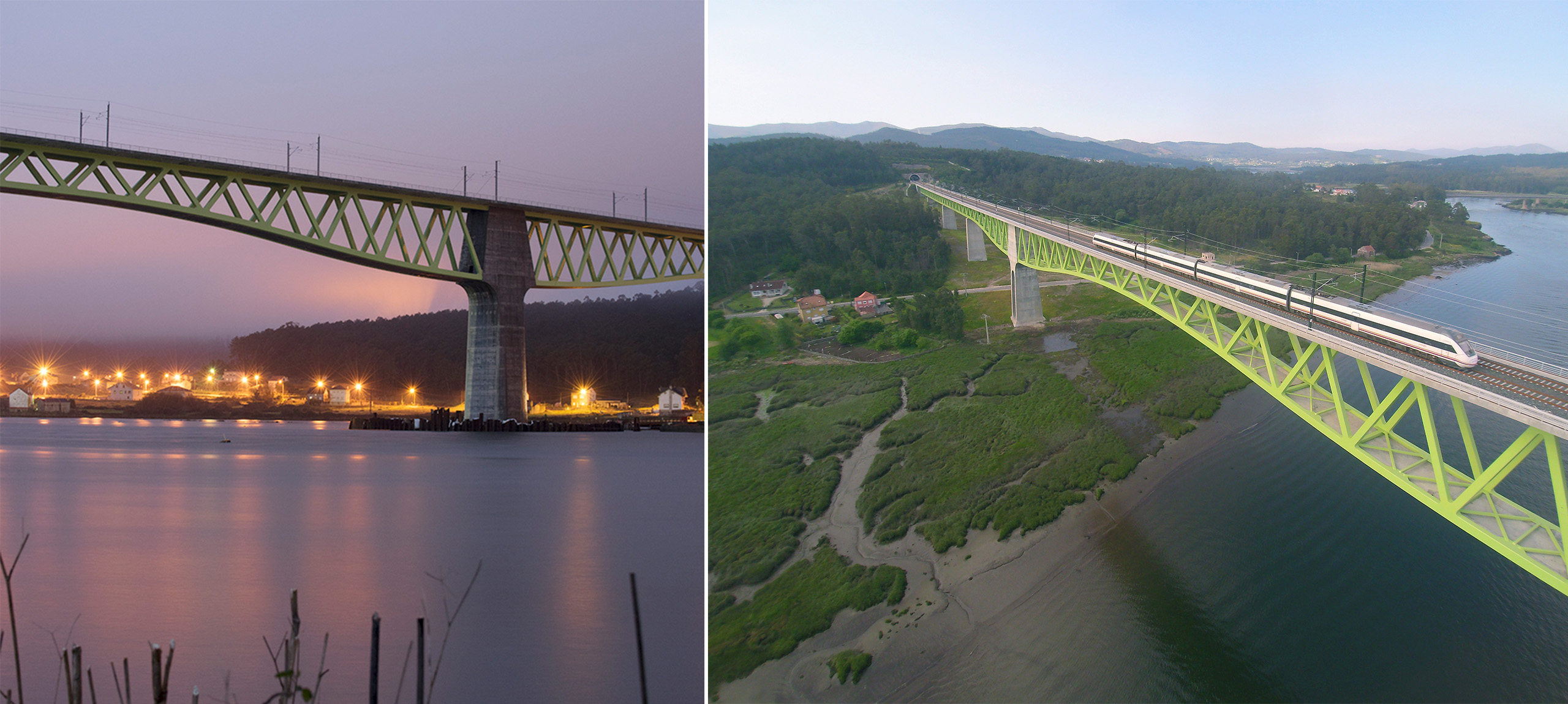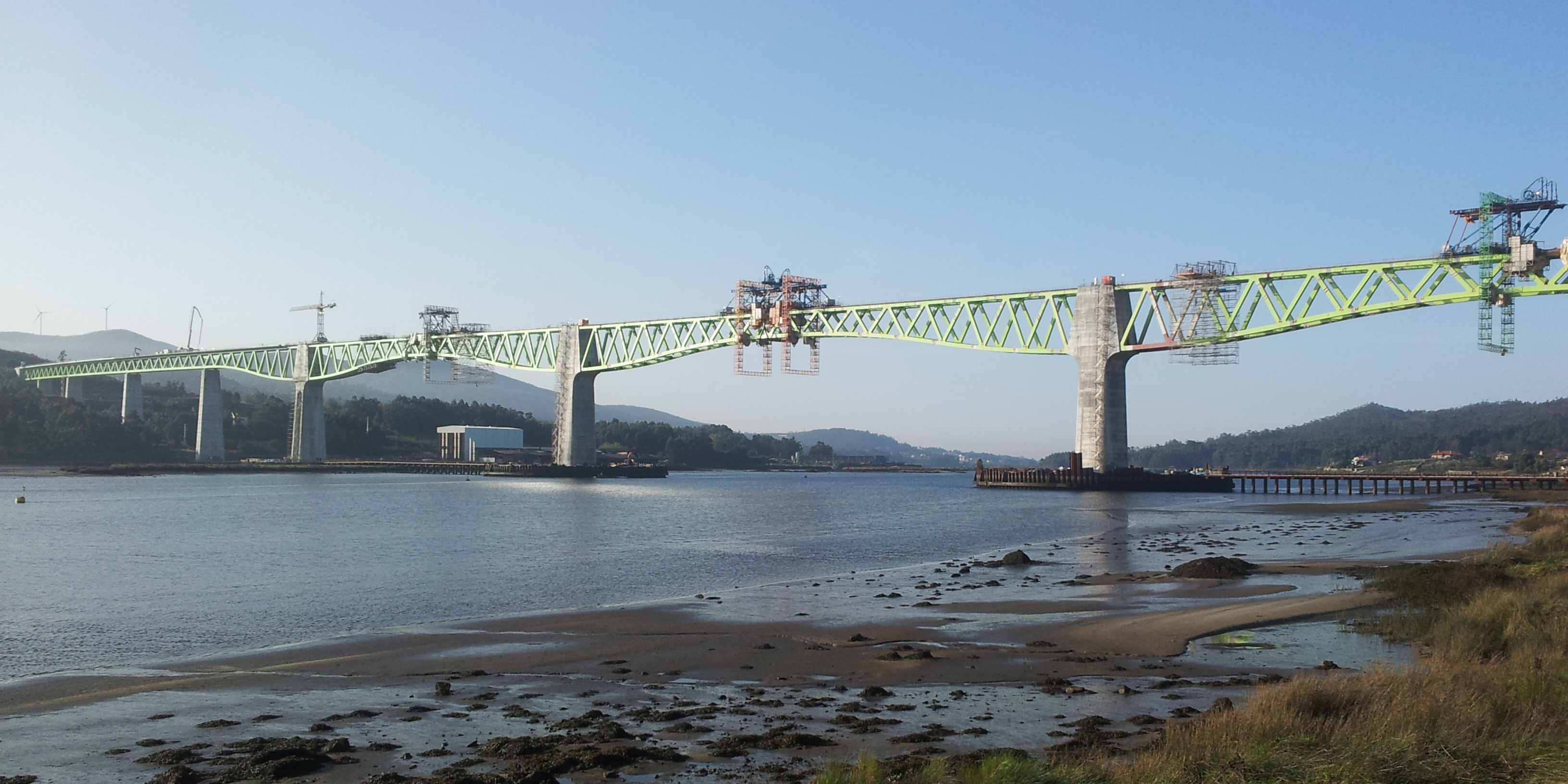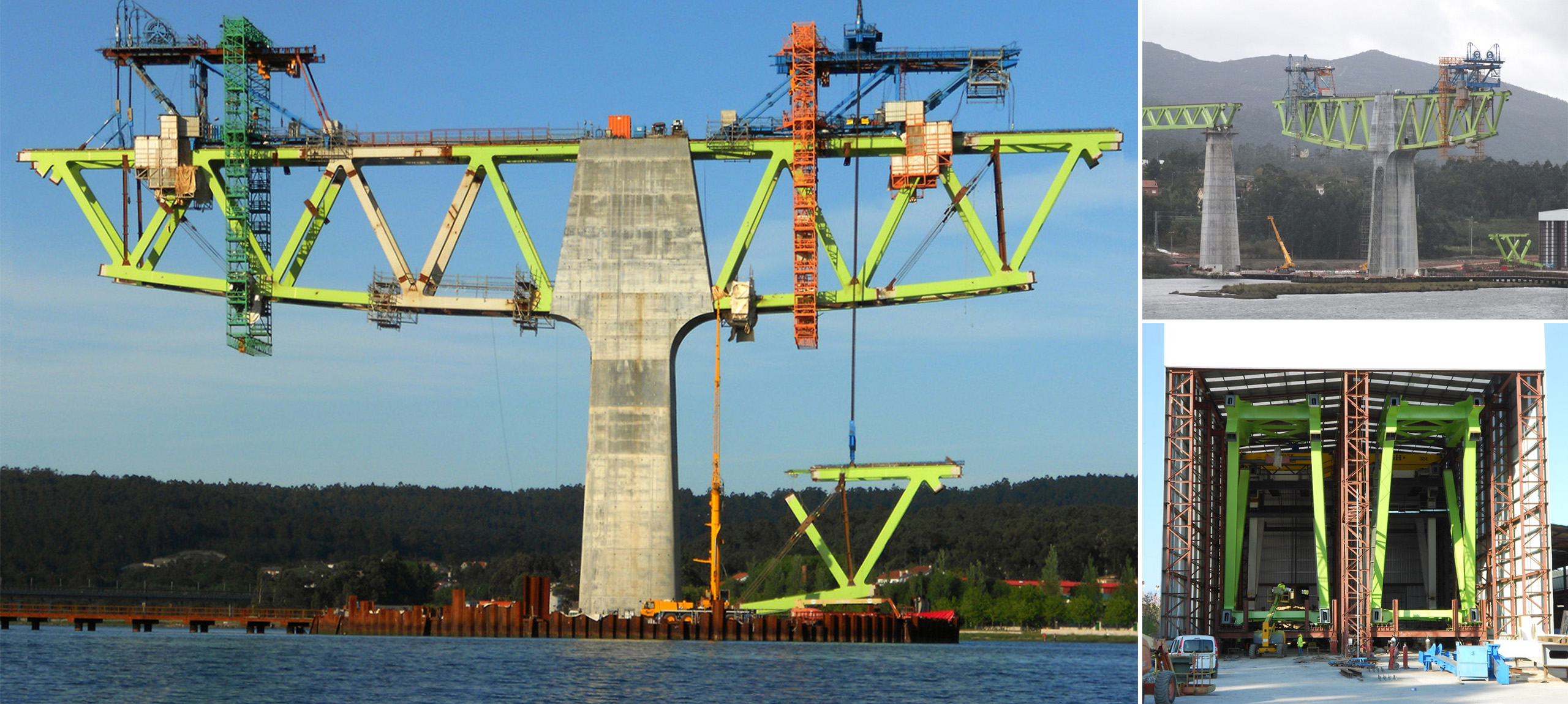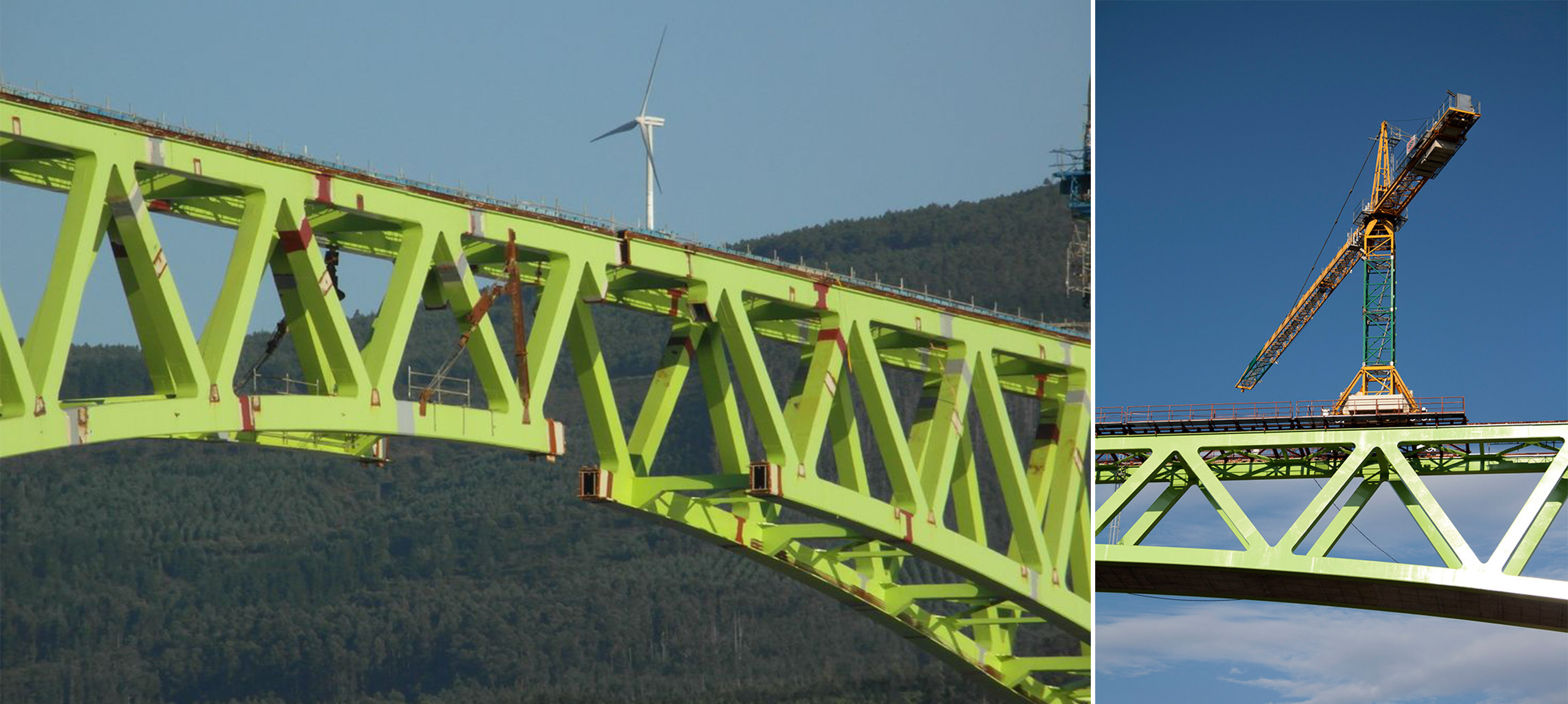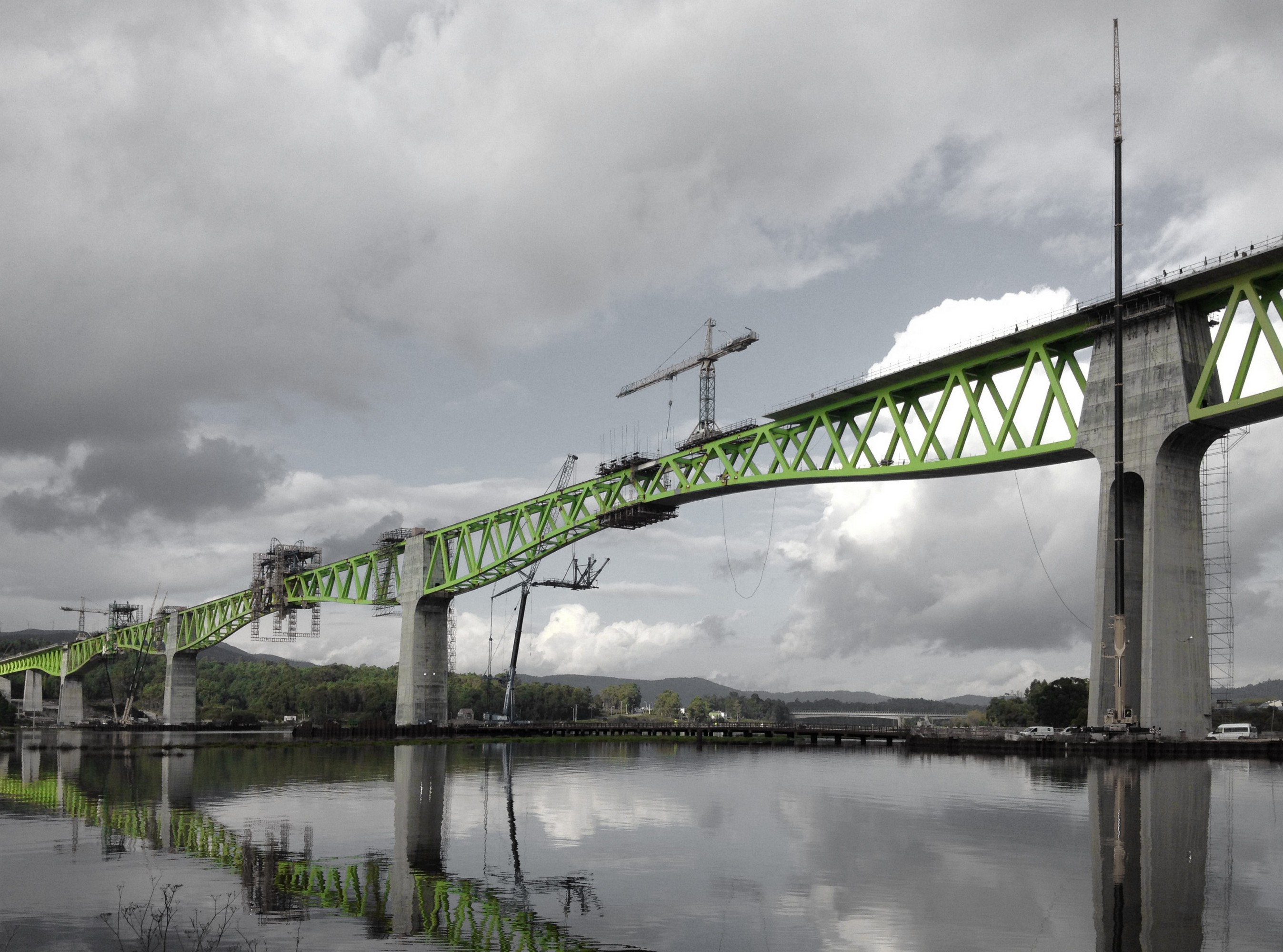
| Viaduct over the Ulla River | |
| Pontevedra-Santiago High-Speed Railway, Spain | |
| Structural typology | Railway Bridges |
| Date | August, 2014 |
| Umfang | Detailed design and construction support |
| Cliente | Dragados - Tecsa |
The crossing over the Ulla River of the Atlantic Axis High-Speed Railway is resolved with a structure of a total length of 1,620 meters, located between kilometer points KP 100+023.213 and KP 101+643.213 of the platform project for the section known as the Ulla Viaduct (A Coruña – Pontevedra).
The viaduct is designed using a steel lattice structural typology with double composite action, arranged with portal frames over the central piers. This configuration significantly contributes to the strength of the three main spans with the longest lengths. In the access spans, which have more moderate yet still significant lengths, the structural scheme of the steel lattice with double composite action is maintained, functioning as a continuous girder over multiple spans.
The viaduct comprises a total of twelve spans. Their span distribution is as follows: 50 - 80 - 3 x 120 - 225 - 240 - 225 - 3 x 120 - 80. This arrangement allows for a wide clearance over the Ulla riverbed, avoiding supports on the Tellería islet and in marshland areas. The considerable span lengths reduce the number of piers, thereby minimizing the overall visual impact of the structure on the landscape.
The viaduct is designed using a steel lattice structural typology with double composite action, arranged with portal frames over the central piers. This configuration significantly contributes to the strength of the three main spans with the longest lengths. In the access spans, which have more moderate yet still significant lengths, the structural scheme of the steel lattice with double composite action is maintained, functioning as a continuous girder over multiple spans.
The viaduct comprises a total of twelve spans. Their span distribution is as follows: 50 - 80 - 3 x 120 - 225 - 240 - 225 - 3 x 120 - 80. This arrangement allows for a wide clearance over the Ulla riverbed, avoiding supports on the Tellería islet and in marshland areas. The considerable span lengths reduce the number of piers, thereby minimizing the overall visual impact of the structure on the landscape.


